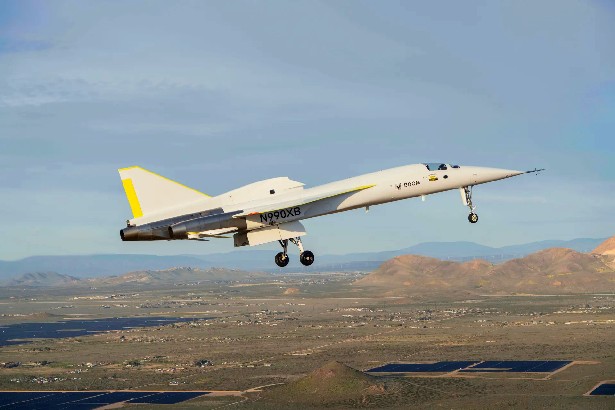Concorde successor. Boom XB-1 supersonic aircraft had its first test flight
30.03.24
The Boom XB-1 supersonic demonstrator successfully completed its first flight at Mojave Air and Space Port in California.
During this historic moment, test pilot Bill “Doc” Shoemaker was at the controls of the XB-1, followed by test pilot Tristan “Geppetto” Brandenburg in the T-38 supersonic aircraft, whose job was to observe the flight and confirm altitude and speed.
The XB-1 is 19 meters long, has a wingspan of 6 meters and is powered by three GE J85-15 engines providing approximately 5.6 tons of thrust. During the first flight, the plane rose to a height of 2170 meters and reached a speed of 440 km/h.
These figures do not meet expectations for a supersonic aircraft, but Boom says that once the aerodynamic characteristics and flight capability are confirmed, the XB-1 will be able to significantly increase its speed. In the next tests it is planned to reach speeds of more than 1,1000 kilometers per hour.
The XB-1 features a number of innovations, including augmented reality, digitally optimized aerodynamics, carbon composite construction and supersonic air intakes that slow incoming air to subsonic speeds. This allows the use of conventional jet engines.
The goal of the Boom XB-1 is to develop technology that will be used in the company’s Overture supersonic jet, designed to carry up to 80 passengers at Mach 1.7.
Don't miss interesting news
Subscribe to our channels and read announcements of high-tech news, tes
Oppo A6 Pro smartphone review: ambitious

Creating new mid-range smartphones is no easy task. Manufacturers have to balance performance, camera capabilities, displays, and the overall cost impact of each component. How the new Oppo A6 Pro balances these factors is discussed in our review.
Editor’s Choice 2025. Best devices of the year by hi-tech.ua

The best gaming laptops, mice for work, gaming keyboards, smartphones, and wireless headphones of 2025. Among them, we will highlight the most interesting ones and those that we can recommend buying.
Modern Mercedes-Benz Unimog get 7.7-liter V6 car Mercedes-Benz
The concept is based on the Mercedes-Benz Unimog U 4023 with portal axles, a robust frame and a full set of differential locks. The main technical change was the replacement of the standard 5.1-liter diesel engine
Honor почне випускати ігрові смартфони games Honor smartphone
За швидкодію відповідають флагманські платформи Qualcomm: Honor Win побудований на Snapdragon 8 Elite, а Honor Win Pro – на новітньому Snapdragon 8 Elite Gen 5


